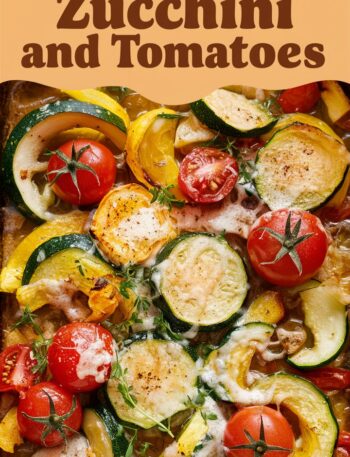Nothing compares to the comforting, creamy indulgence of a bowl of homemade mac and cheese. With its velvety cheese sauce, perfectly cooked pasta, and rich, buttery aroma, this timeless dish has earned its place as one of the most beloved comfort foods in the world. While boxed versions offer convenience, the homemade version — made with real cheese, fresh milk, and love — delivers unmatched flavor, texture, and satisfaction.
In this comprehensive guide, you’ll learn everything about homemade mac and cheese: from its fascinating history and ingredient roles to step-by-step instructions, expert tips, creative variations, and make-ahead advice. By the end, you’ll be able to prepare a perfect mac and cheese that’s even better than restaurant versions — smooth, cheesy, and irresistibly rich.
A Brief History of Mac and Cheese

Macaroni and cheese may seem like a modern comfort dish, but its roots go back hundreds of years. Historians trace its origins to 14th-century Italy, where pasta and cheese were commonly baked together in layered casseroles. A version of “macaroni and cheese” appeared in an English cookbook called The Forme of Cury in the late 1700s, featuring hand-cut pasta mixed with butter and cheese.
However, Thomas Jefferson is credited with introducing macaroni and cheese to America. After encountering pasta dishes during his travels in France and Italy, he brought the concept home and served it at a state dinner in 1802. From that moment, mac and cheese became a cherished part of American cuisine — particularly in the Southern United States, where it evolved into a soulful baked delicacy.
By the 20th century, convenience foods like boxed mac and cheese emerged, offering quick and easy comfort. But the homemade version has always stood apart — richer, fresher, and bursting with authentic cheese flavor.
Why Homemade Mac and Cheese is Worth It
While boxed mac and cheese may be faster, nothing rivals the taste of the homemade version. Making it from scratch gives you control over every ingredient and allows endless customization.
1. Real Cheese, Real Flavor
Homemade mac and cheese uses real, freshly shredded cheese, creating a luscious sauce without the artificial additives found in boxed mixes. The result is a flavor that’s sharper, creamier, and far more satisfying.
2. Control Over Ingredients
You can adjust the level of creaminess, saltiness, and cheesiness. You decide whether to use sharp cheddar for bold flavor, Gruyère for nutty richness, or mozzarella for silky stretchiness.
3. Creamier Texture
Homemade sauce starts with a roux — a mixture of butter and flour that thickens the milk and cheese — ensuring a smooth, velvety sauce that perfectly coats the pasta.
4. Healthier Option
By skipping preservatives, artificial colors, and processed cheese powders, you get a dish that’s wholesome and made with simple, quality ingredients.
Essential Ingredients for the Best Mac and Cheese
Creating restaurant-quality mac and cheese begins with understanding what each ingredient does. Let’s break down the essentials.
1. Pasta
The pasta shape affects how the cheese sauce clings and coats each bite.
- Elbow Macaroni: The traditional choice, perfect for holding creamy sauce.
- Cavatappi: Spiral-shaped, offering a fun texture and great sauce absorption.
- Shells: Trap cheesy goodness inside every curve.
- Rigatoni or Penne: Ideal for baked versions that need structure.
Tip: Cook your pasta al dente (firm to the bite). Overcooked pasta absorbs too much sauce and turns mushy.
2. Cheese
The heart of mac and cheese lies in its cheese selection. The best results come from mixing different cheeses for balance — one sharp for flavor and one melty for creaminess.
Best Cheeses to Use:
- Sharp Cheddar: The backbone of traditional mac and cheese.
- Mozzarella: Adds stretch and creaminess.
- Gruyère: Offers a nutty, gourmet depth.
- Monterey Jack: Mild, smooth, and creamy.
- Gouda: Slightly sweet and smoky — adds sophistication.
Pro Tip: Always shred your own cheese. Pre-shredded varieties contain anti-caking agents that prevent smooth melting.
3. Dairy
The creaminess of your mac and cheese depends on the dairy base.
- Whole Milk: The classic choice for a creamy but light texture.
- Heavy Cream: Adds richness and body.
- Half-and-Half: A balanced alternative if you prefer less fat.
- Evaporated Milk: Great for a silky sauce without extra cream.
You can even blend milk and cream for the perfect consistency.
4. Butter and Flour (The Roux)
The roux forms the foundation of your cheese sauce. Butter adds flavor, while flour thickens the sauce. When cooked together briefly, they create a smooth base that prevents the cheese sauce from becoming watery.
Tip: Cook the roux just until golden — not brown. Overcooking can give the sauce a nutty, toasted flavor that overpowers the cheese.
5. Seasonings
While cheese is the star, subtle seasonings bring balance and depth.
- Salt & Pepper: Essential for enhancing cheese flavor.
- Paprika: Adds mild warmth and color.
- Mustard Powder: Balances the richness with a tangy kick.
- Garlic Powder or Onion Powder: Boosts savoriness.
- Nutmeg (optional): A pinch adds a faint, comforting aroma.
Step-by-Step: How to Make Homemade Mac and Cheese
Follow these simple steps to make creamy, cheesy perfection every time.
Step 1: Cook the Pasta
- Boil 4 cups of water in a large pot.
- Add 1 teaspoon of salt to season the pasta.
- Stir in 12 ounces of elbow macaroni.
- Cook until al dente (firm but tender), about 7–8 minutes.
- Drain and set aside.
Tip: Rinsing pasta lightly in warm water prevents sticking but don’t rinse too much — a little starch helps the sauce cling better.
Step 2: Make the Roux
- In a large saucepan, melt 2 tablespoons butter over medium heat.
- Whisk in 2 tablespoons flour, stirring constantly for 1 minute until lightly golden.
- Gradually add 2 cups whole milk, whisking continuously to prevent lumps.
- Pour in 1 cup heavy cream and cook until slightly thickened.
Step 3: Create the Cheese Sauce
- Reduce heat to low.
- Add 2 cups shredded sharp cheddar and 1 cup mozzarella gradually.
- Stir until melted and smooth.
- Add ½ teaspoon each of salt, pepper, and paprika.
Your sauce should be glossy, thick, and creamy — not grainy or oily.
Step 4: Combine Pasta and Sauce
Add the cooked pasta to the cheese sauce. Stir gently until all noodles are fully coated.
If it feels too thick, stir in a splash of warm milk. Taste and adjust seasoning as needed.
Step 5 (Optional): Bake for a Crispy Topping
- Preheat oven to 375°F (190°C).
- Transfer mac and cheese to a greased baking dish.
- In a small bowl, mix ½ cup panko breadcrumbs with 2 tablespoons melted butter.
- Sprinkle the mixture on top, and add a little shredded cheddar.
- Bake for 15–20 minutes, until the top is golden brown.
Let it rest for 5 minutes before serving so the sauce thickens perfectly.
Popular Variations of Mac and Cheese

Once you’ve mastered the classic, you can experiment with endless variations to suit your taste.
1. Stovetop Mac and Cheese
Quick, ultra-creamy, and ready in under 30 minutes. Perfect for weeknights or when you crave pure cheesiness without a baked crust.
2. Baked Mac and Cheese
Rich, hearty, and perfect for gatherings. The crispy, golden topping contrasts beautifully with the creamy interior.
3. Spicy Mac and Cheese
Add diced jalapeños, cayenne pepper, or hot sauce for a kick. Use pepper jack cheese or top with crushed spicy tortilla chips for extra heat.
4. Protein-Packed Mac and Cheese
Turn it into a complete meal:
- Add grilled chicken for lean protein.
- Stir in bacon bits for smokiness.
- Mix with ground beef for a cheeseburger-style twist.
- Top with pulled pork for Southern BBQ flair.
5. Gourmet Mac and Cheese
Blend Gruyère, Gouda, and white cheddar for a rich, sophisticated version. Add caramelized onions or truffle oil for a restaurant-quality experience.
6. Gluten-Free and Vegan Options
- Use gluten-free pasta and gluten-free flour for the roux.
- Swap dairy milk for almond, soy, or oat milk.
- Replace cheese with cashew-based cheese or nutritional yeast for a plant-based cheesy flavor.
Tips & Tricks for Perfect Mac and Cheese
1. Avoid Grainy Sauce
- Always use freshly shredded cheese.
- Melt cheese on low heat.
- Add cheese gradually, stirring constantly.
2. Keep It Creamy
- Make your sauce slightly thinner than you think; it thickens as it cools.
- Cover with foil while baking to prevent drying.
- Add extra milk or cream when reheating leftovers.
3. Prevent Overbaking
Bake only until the top is golden brown — around 15–20 minutes. Overbaking dries out the sauce and toughens the pasta.
4. Make It Ahead
You can assemble mac and cheese a day in advance. Cover tightly and refrigerate. When ready to bake, let it sit at room temperature for 30 minutes, then bake as directed.
Serving Suggestions
Homemade mac and cheese pairs beautifully with many sides and mains. Here are some great serving ideas:
- With Roasted Vegetables: Broccoli, Brussels sprouts, or carrots add freshness and balance.
- With Fried or Grilled Chicken: A classic Southern pairing.
- With BBQ or Ribs: The smoky flavor complements cheesy richness.
- As a Holiday Side Dish: Perfect for Thanksgiving or Christmas dinners.
- With Salad: A light green salad or coleslaw cuts through the richness.
You can even serve mini portions in ramekins for parties or potlucks.
Nutritional Information (Per Serving)
(Approximation for one serving of baked mac and cheese)
- Calories: 450 kcal
- Protein: 18 g
- Carbohydrates: 32 g
- Fat: 28 g
- Calcium: 30% of daily value
- Sodium: 680 mg
Health Note:
Mac and cheese is rich in calcium and protein, supporting bone and muscle health. For a lighter version, use low-fat milk, less butter, and add vegetables like spinach or broccoli for extra nutrients.
Storage, Freezing & Reheating
Refrigerator:
Store leftovers in an airtight container for up to 4 days.
Freezer:
Freeze baked mac and cheese for up to 2 months. Thaw overnight in the refrigerator before reheating.
Reheating:
- Stovetop: Add a splash of milk and warm over low heat, stirring gently.
- Oven: Cover with foil and reheat at 350°F (175°C) for 15–20 minutes.
- Microwave: Add 1–2 tablespoons of milk and heat in 30-second intervals, stirring in between.
Common Mistakes to Avoid
- Using pre-shredded cheese: Contains additives that prevent melting smoothly.
- Cooking pasta too long: It will turn mushy when baked.
- Overheating cheese: Leads to curdling and grainy texture.
- Not seasoning enough: Cheese sauce needs salt and spices to shine.
- Skipping the roux: Without it, sauce can be runny and unstable.
Frequently Asked Questions

Q1: Can I use other types of pasta besides macaroni?
Absolutely! Shells, cavatappi, penne, or fusilli all work beautifully — just make sure they hold the sauce well.
Q2: What’s the best cheese combination for homemade mac and cheese?
Sharp cheddar and mozzarella are a great start. Add Gruyère or Monterey Jack for extra flavor and creaminess.
Q3: How can I make my mac and cheese extra creamy?
Use a mix of milk and cream, don’t overcook the pasta, and melt the cheese slowly on low heat.
Q4: Can I make mac and cheese ahead of time?
Yes. Assemble it up to a day in advance, refrigerate, and bake when ready to serve.
Q5: Can I freeze homemade mac and cheese?
Yes, freeze it in airtight containers for up to 2 months. Thaw overnight and reheat gently.
Q6: Why did my cheese sauce turn grainy?
This happens when cheese is added at too high a temperature. Lower the heat and stir slowly for a smoother texture.
Q7: What toppings can I use instead of breadcrumbs?
Try crushed Ritz crackers, potato chips, or even crispy fried onions for a creative crunch.
Final Thoughts
Homemade mac and cheese is more than a recipe — it’s an experience. From its humble European beginnings to its status as a beloved American comfort food, this dish continues to bring families together with every cheesy, heartwarming bite.
By following these steps and expert tips, you’ll have a bowl of mac and cheese that’s creamy, flavorful, and perfectly balanced — made entirely from scratch and crafted with love. Whether it’s a weeknight dinner, holiday feast, or comfort on a rainy day, this recipe will always deliver pure satisfaction.





